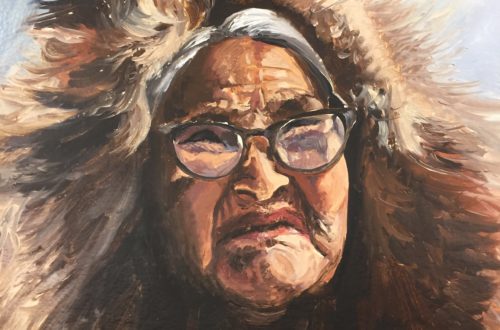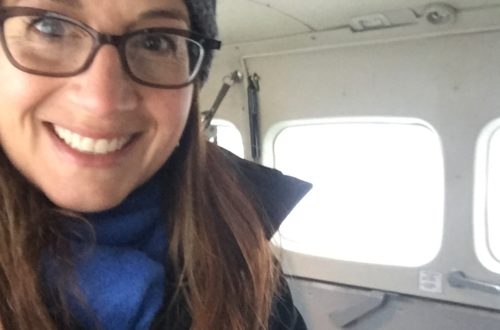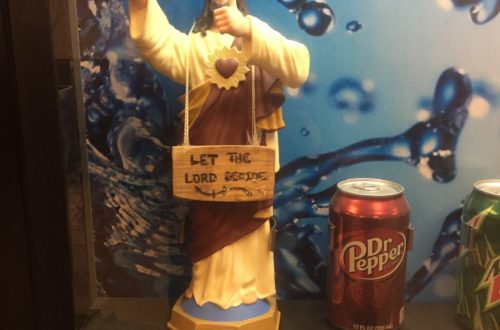
Buckland and Selawik, Alaska (3/5)
Let’s compare populations of these Alaskan villages. Noorvik has 608 people, 96% native with a median age of 24. With 596 people, Buckland is 96% native with a median age of 20. Selawik boasts 794 residents, 98% native with a median age of 23.
The poverty rate is highest in Noorvik at 37%, with the largest job category being “Administration”. In Buckland, the poverty rate is 25%, with the largest job category being “Education”. The poverty rate in Selawik is 30%, with the largest job category being “Construction and Abstraction”. To compare, the poverty rate in all of the United States is 14%. There are no cars registered in any of the towns.
Noorvik and Buckland are dry towns, which means there is no sale or importation of alcohol, and possession is illegal. Selawik is a “damp” town, so there is no sale of alcohol but possession is NOT illegal. There are no bars or restaurants in any of the towns. Zero. Not one. In each village, there are residential houses, abandoned houses, the school (K-12), sometimes a post office, sometimes a government office, and always a native store.
People at home ask me one common question: “Is the word “Eskimo” acceptable?” The short answer is no, “Eskimo” is not the best word choice. According to the Alaska Native Language Center, linguists believe the word Eskimo came from the French word Esquimaux, meaning “one who nets snowshoes.” Arctic peoples built snowshoes by tightly weaving sinew from animals across a wooden frame. This correction to the previous negative interpretation of the word Eskimo that meant “eaters of raw meat” came too late to rehabilitate the word. Currently, the most widely accepted term in Alaska is “Inuit”, which means simply, “people”. Oddly, this word isn’t present in all 20 of Alaskan native languages. Under US and Alaskan law, as well as the linguistic and cultural traditions of Alaska, “Alaska Native” refers to all indigenous peoples of Alaska and is the best choice.
Basketball creates an ongoing competition in the villages. That weekend in Buckland, an epic tournament takes place at the school. There is a feeling of festivity and excitement. High school kids sell junk food. To raise funds for the traveling teams, you can purchase corndogs, pizza, candy bars, and ice cream made from a powder mix. The games continue into the early morning hours. I hear cheers from my sleeping place in the library at 1 am.
The names of the teams are the best part of the tournament because they so accurately reflect their people and community. “Sissauni”, an Eskimo word for beluga whales, is the Buckland mascot. In Aniak, so many people who live there are half native, half Caucasian that they named the team the “Halfbreeds”. Point Hope chose the “Harpooners” (and the “Harpoonerettes” for the girls) because whale hunting is an important element of life in this Chukchi Sea village. When you see Shishmaref players hit the court wearing jerseys that say “Northern Lights,” you can bet these kids have seen the aurora borealis. Chefornak, a Yupik village, named their team the “Shamans”, a term for medicine men or spiritual leaders. Diomede of the Bering Strait School District is located a few miles west of the International Dateline and their nickname is the “Dateliners”. In the village of Metlakatla, the boys are the “Chiefs” and the girls are the “Mischiefs”. That last one is my favorite.
While we are visiting, Buckland’s water becomes contaminated with e. coli. We boil all water for five minutes before consumption. Julie and I purchase the last two bottled gallons at the native store. I fear contracting a debilitating sickness while this far from civilization. I am overly careful. I use bottled water to brush my teeth and wash my dishes. I escape without incident.
An Elder died in Buckland one week before our stay. Native culture defines an “elder” (lower case) as an Alaskan Native who reached an advanced age. An “Elder” (capitalized) is an elder who is respected for their knowledge, positive personality, healthy lifestyle, and upstanding personality characteristics. When an Elder dies, it is a big deal.
The funeral takes much preparation. The villagers use a jackhammer to penetrate the permafrost to dig the grave. They build the casket and grave marker by hand from wood. Individuals in the community care for the body and it remains in the home until burial. Elaborate rituals involving dance and copious quantities of food occur after the village buries the body. During the ceremonies, it is appropriate to tell funny stories about the person. Alaskan natives believe that without song and ceremony, no member of the tribe can enter the afterlife.
Buckland’s cemetery can be viewed across the frozen river on the top of the hill. It is picturesque and eerie to view the handmade crosses silhouetted against the white sky. Due to climate change, the permafrost is melting in some villages. The caskets and grave markers are sinking and disappearing into marshland. The residents are struggling to find a different burial solution.
An appointed person rings the town bell to call everyone to church. The bell is also used to gather the town to celebrate, or for a particular job, like processing a freshly caught whale. Every village has a bell.
Our next destination is Selawik. Selawik is a boardwalk village. There are no roads, just boardwalk paths over marshy ground. There are no cars, only ATVs or snow machines. There is a steel bridge that connects the two banks of the river and the two halves of the town. The town has a nostalgic east coast seashore feel because of the boardwalks and despite the frigid temperatures. The frozen river is also used as transport in true Emmit Otter style. (Emmet Otter’s Jug Band Christmas was my favorite childhood Christmas show. It depicted a town of Muppet river animals who used their frozen river as the main throughway.)
In some ways, being in rural Alaska is like being transported back to the 1950s. While in Selawik, I am told that my sleeping quarters are on a cot in the “SPED room”, meaning the Special Education room. Yes, they call it the Sped room, unabashedly. I am appalled. When I gently and haltingly ask if they thought that is derogatory, everyone seems confused by my inquiry. The garbage can is even labeled “SPED”.
Ice fog is a new term to me. It rapidly becomes an imperative phrase, as it is the reason for the delay in my trip home. Ice fog occurs when water suspends in the air, freezes and becomes ice, creating poor visibility. Alaskan passenger planes won’t fly in ice fog. The weather delays our departure overnight but we speedily got underway in the morning.
When we meet the plane at the airstrip in the morning, the pilot is unloading box after box after uniformly-shaped box. If you are physically able, passengers help load and unload the plane. I notice these boxes are unusually light. When I ask what is in the airy boxes, wait for it…
POTATO CHIPS.
There are at least 40 boxes of single size potato chips that sell at the native store for $8.
I finally, finally, finally settle into the plane for the trip home.
I fly from Selawik to Noorvik,
Noorvik to Kotzebue,
Kotzebue to Nome,
Nome to Anchorage,
Anchorage, Alaska to Seattle, Washington
and finally Seattle, Washington to Philadelphia, Pennsylvania.
We leave Selawik at 9 am and I land in Philadelphia at 4 pm the next day, minus the four hour time difference, equals 27 hours later. With each hour of travel, the trip’s events become solidified in my mind and heart. Alaska becomes imbedded in my heart.
And then I sleep.


You May Also Like

Noorvik, Alaska (2/5)
January 23, 2018
Anchorage and Kotzebue, Alaska (1/5)
January 22, 2018
